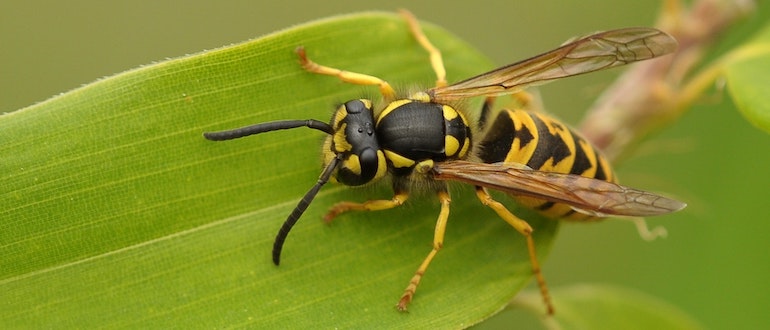
Tips and news
What to do if a bee or wasp stings my dog?
The heat arrives and with it the field trips … and the incidents with the wasps … In this post we explain what to do if your dog suffers a bee or wasp sting. We already tell you that it will be good for you to have a card at hand …
Dogs, apart from being curious, enjoy hunting flies and other insects that fly around them. But when the victims are bees or wasps, things go wrong … and the hunter is hunted.
The common thing is that they suffer some pain or some small irritation for a short period of time. But the thing can be more serious if they suffer several stings, if the sting is inside the mouth, or they are allergic to the poison.
First of all keep calm and check the sting. Look around and see if there are any dead bees. Frequently monitor the evolution of the bite and the symptoms that your dog presents.
Immediate Veterinary Attention
Your dog should receive urgent veterinary attention if he exhibits the following symptoms:
- General weakness
- Difficulty breathing
- A large swelling around the bite
Other symptoms to watch out for are:
- Incrise of cardiac frecuency
- Fever
- Vomiting
- Diarrhea
- Tremors
- Cold limbs
The muzzle area is very sensitive for dogs, and bites in that area usually cause a lot of pain. But since the bite is in an area outside the respiratory tract, it is likely that it will not reach more.
Problems come when the swelling spreads to the tongue, mouth, throat, or neck. The dog can suffer obstructions and blockages of the airway.
The stinger of the bee is serrated, it is hooked to the poison bag, and it remains on the skin after the sting. So you have to remove it so that it does not continue injecting. It is best to use a credit card, scratching the skin as in the image:

Using tweezers is a big mistake. With the forceps you run the risk of puncturing the venom sac and worsening the problem.
On the other hand, the stinger of the wasp is not serrated and does not adhere. However, our dog suffers multiple bites, which makes it more painful. These types of attacks can lead to more serious symptoms.
Treat inflammation
If the inflammation is localized in the extremities, we can put water to give cold, relieve the itching and lower the inflammation. If the head is in the area, we will try to reduce the inflammation using cold water gauze, and relieve the itching sensation.
If your dog does not feel relief and the inflammation does not go down, go to the nearest veterinary center. There they can give you a medication and have better control of the symptoms.









